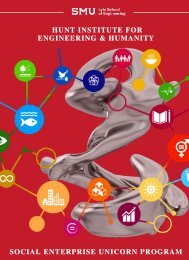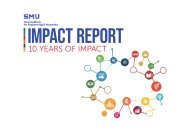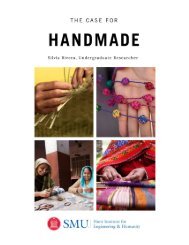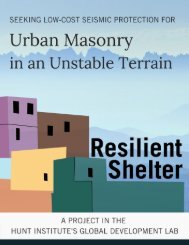Bridging the Gap in Diagnostics
Traditionally, biomedical engineers have developed technologies in response to the needs of the developed world’s medical community. These approaches often do not address the needs of the majority of the world’s peoples afflicted with both communicable and non-communicable diseases as the developments are far too costly and those with most need have, at best, limited access to supporting clinical laboratory infrastructure in developing countries. A gap in care has emerged as a result of these conditions. As a result, Drs. Beskok and Koklu have developed a Lab on a Chip technology that can test for a chosen disease with a turnaround time of just a few seconds and a detection limit of 1 ng of antigen per 1 mL of sample fluid. This is a great improvement to current devices on the market and is particularly useful in high-throughput, low-skill staffing environments. This report researched and authored by an interdisciplinary group of undergraduate students at the Southern Methodist University working in the Hunt Institute aims to address the areas of greatest need in response to UNSDG #3 "to ensure healthy lives and promote wellbeing for all at all ages."
Traditionally, biomedical engineers have developed technologies in response to the needs of the developed world’s medical community. These approaches often do not address the needs of the majority of the world’s peoples afflicted with both communicable and non-communicable diseases as the developments are far too costly and those with most need have, at best, limited access to supporting clinical laboratory infrastructure in developing countries. A gap in care has emerged as a result of these conditions. As a result, Drs. Beskok and Koklu have developed a Lab on a Chip technology that can test for a chosen disease with a turnaround time of just a few seconds and a detection limit of 1 ng of antigen per 1 mL of sample fluid. This is a great improvement to current devices on the market and is particularly useful in high-throughput, low-skill staffing environments. This report researched and authored by an interdisciplinary group of undergraduate students at the Southern Methodist University working in the Hunt Institute aims to address the areas of greatest need in response to UNSDG #3 "to ensure healthy lives and promote wellbeing for all at all ages."
You also want an ePaper? Increase the reach of your titles
YUMPU automatically turns print PDFs into web optimized ePapers that Google loves.
4.2 MALARIA
Region Global Africa South-East Asia
DALYs
(000s)
% total of
DALYs
DALYs
(000s)
% total of
DALYs
DALYs
(000s)
% total of
DALYs
Tuberculosis 51642.60 1.94 18393.29 3.07 23836.35 3.35
Malaria 37368.77 1.40 34679.77 5.79 1833.92 0.26
Figure 8: 2016 DALY for Global, the African region, and the South-East Asia region as provided by the WHO’s report on
leading causes of death from 2000 to 2016. 18
Malaria is currently a global epidemic. Within the Africa region, the WHO reported
Malaria as the 4th highest DALYs percentage in 2016. At the start of the 20 th century Malaria
was also ranked 4 th on the DALY measure in the African region. While the DALYs percentage
has fallen from 9.0 in 2000 to 5.8 in 2016, significant progress in diagnostics and treatment still
must be made in order to reach the subset of the third SDG: to end Malaria by 2030. Although
Malaria persists an issue world-wide, the greatest WHO region affected continues to be Africa
with a concentration in the Sub-Saharan region (see Figure 5). 18
Figure 9: This map shows an approximation of the parts of the world where malaria transmission occurs, as supported by the
CDC report of global Malaria. 36
29














